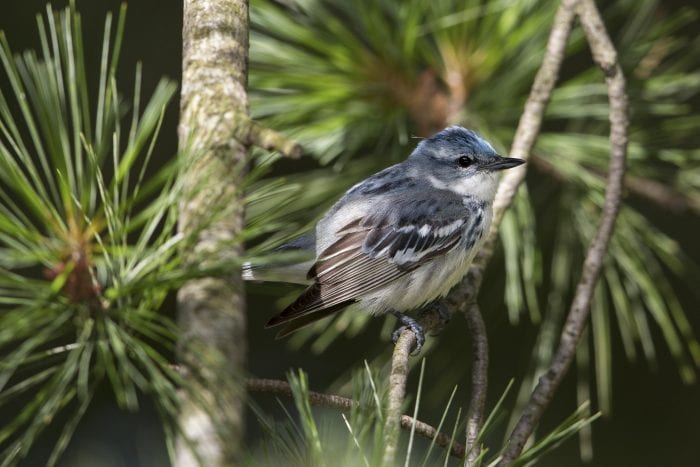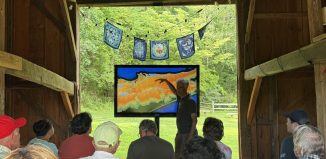Nature Matters: Climate change has many faces

By John L. Turner
For many years there has been a broad public perception that the primary effect of dumping excessive amounts of carbon dioxide (CO2) into the atmosphere, from the burning of fossil fuels (and the release of other gases such as methane from landfills, gas and oil wells, and other sources), was the warming of the atmosphere — a phenomenon that was first called “global warming” or the “greenhouse effect.”
Higher average daily and annual temperatures in the atmosphere have, indeed, occurred, so that label is partially correct — 2019 was the second hottest year ever measured, only slightly behind 2016, and according to records of the National Oceanic and Atmospheric Administration, the past five years are the warmest years on record in the 140-year span the federal government has been measuring atmospheric temperatures; today’s earth is more than two degrees (Fahrenheit) warmer than it was in 1950.
But while the term “global warming” has become shorthand to describe the effect increasing concentrations of atmospheric CO2 have on climate, a wide number of scientists recognize that warming temperatures are but one of many adverse environmental effects caused by too much atmospheric CO2 and, in fact, in some places excess CO2 has caused cooling.
Thus, the term “global warming” both is inaccurate and too restrictive to capture the full range of ecological/environmental impacts and resultantly has fallen into disfavor, replaced by the more accurate label of “climate change” or “climate disruption”. But even these more accurate, expansive labels don’t completely portray the full suite of environmental effects occurring around the world, effects that go far beyond climate, as concerning as that alone would make the climate crisis.
Below is a description of but a few of the many commonly recognized “faces” of climate change that have emerged over the past decade:
More extreme and destructive weather — A warmer atmosphere has more energy and holds more water vapor. This has resulted, in the past decade, of more intense weather events such as increased rainfall and associated flooding, hurricanes, and in some places just the opposite: droughts, often resulting in catastrophic wildfires. Poor Texas: in 2011 the state experienced day time temperatures of over 100 degrees for more than 100 straight days! and experienced a “500-year” storm (a storm of such intensity it is expected to occur once every 500 years) for three straight years (2015-2017).
Sea level rise — As temperatures rise so does the level of the ocean due to thermal expansion and the large volumes of meltwater running off of glaciers and ice caps; it is 2.6 inches higher than 1993 and is rising about one-eighth of an inch per year, a rate that some fear will increase and perhaps increase quickly.
The NYS Department of Environmental Conservation has published sea level rise projections for Long Island; for the 2050s the low projection is an eight inch rise, the medium range projection is 16 inches and the high projection is 30 inches. If the medium to high projections occur, Long Island’s shoreline will be redrawn with marshes and beaches disappearing and thousands of homeowners having to relocate. Miami and many other coastal cities are already being inundated.
Ocean Warming & Acidification — The world’s oceans are warming too and also absorbing the significant majority of excess CO2. When CO2 combines with seawater a weak acid — carbonic acid — is formed. This is not good for shell making creatures like clams and corals. Due to ocean warming and the shifting of pH, coral and other shell making creatures are increasingly stressed. A 2008 study on the health of the planet’s coral reefs indicated that one-fifth are gone with another 15-20% under significant stress.
Impacts to Wildlife — Every other species on Spaceship Earth will potentially be affected by climate change; many have already. Birds, for example, run the risk of starving due to a timing mismatch between when they migrate and when their insect food emerges. A report from the National Audubon Society published in late 2019 finds that two-thirds of North American species are at heightened risk of extinction due to climate change.
Spreading of disease — A number of disease-causing pathogens are likely to get worse as the climate becomes warmer and wetter. Malaria is but one example and it is not a small example. According to the World Health Organization 405,000 people died from contracting malaria last year with 228 million contracting the disease. Closer to home, scientists think both West Nile Virus and Lyme disease will become more prevalent as the planet warms.
A popular slogan seen at climate change rallies is “There is no Planet B.” We can continue to sleepwalk through the issue by electing leaders who “deny” climate change, and pretend there’s a Planet B awaiting us once we finish befouling Planet A. Collectively, we have a fundamental choice to make — we can recognize the madness of this idea, or recognize there is, of course, only one hospitable planet — Planet A — and as occupants of it, we are in a great position to do something about it.
The “faces” of climate change are profound and the magnitude of what needs to be done may seem intractable and overwhelming, leading us to throw up our collective hands in despair.
A much better response is to use those same hands to reduce our carbon footprints by: holding a pen to check the box on the election ballot for candidates who recognize the serious threat climate change poses to nature and humanity, use another pen to write a check to a solar company if you can afford to install roof-top solar panels, twist some new LED light-bulbs into ceiling and lamp sockets, grab a screwdriver and install a dryer vent deflector to have the moist and warm heat from your dryer warm your house in the winter rather than be vented (and wasted) outdoors, lift the lid of your compost bin to compost organic waste, and drop recyclable materials, especially aluminum cans, into your recycling can.
And by completing these actions, and others, you’re acknowledging there is no Planet B, and further, that Planet A, this one small and fragile blue marble floating in a vacuum void, is all we have and all we will ever have. Taking these concrete steps to address the many faces of climate change is bound to put a smile on your face.
A resident of Setauket, John Turner is conservation chair of the Four Harbors Audubon Society, author of “Exploring the Other Island: A Seasonal Nature Guide to Long Island” and president of Alula Birding & Natural History Tours.






